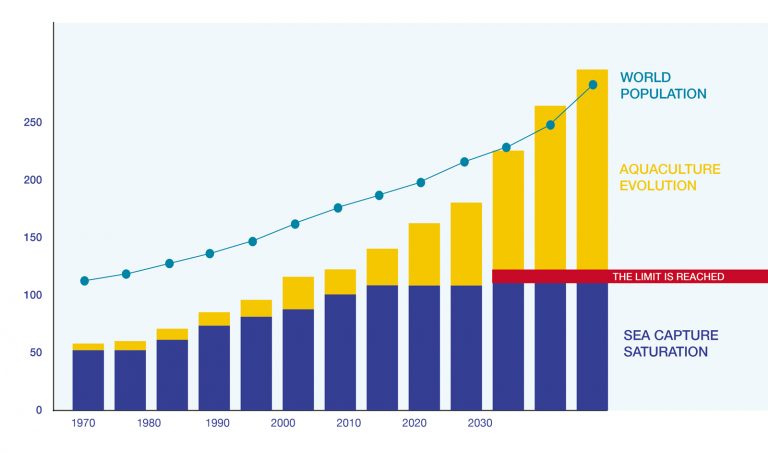Aquaculture Facts
Worldwide
Aquaculture | Fact & Figures
Aquaculture is essential to the Global seafood market

Aquaculture will supply
100%
of the growth in demand for seafood before 2025.
(Source: FAO – Food and Agriculture Organization)
Global seafood shortage
65 Million Tons
is the expected gap between supply and demand by 2030.
(Source: Bloomberg & United Nations / FAO)
In 2019; largely affected by the COVID-19 pandemic. By 2027, the industry is projected to reach 193 Billion $. (FAO)
Aquaculture is expected to grow 4% to 5% annually for the next decade (Mordor Intelligence). This is mainly driven by the growth of the global population and the consumers wanting to eat more fish.
Diesel is burned by aquaculture with the shattering consequence to the environment and fish. Norway is the first country to ban diesel for aquaculture as of 2021. (U.N./FAO)
Consumers eat more fish every year. However, consumers want to eat healthy fish with complete nutritional value. This can only be provided by clean aquaculture. (FAO. U.N.)
as the global population raises to 9 Billion people by 2050, the demand for seafood is expected to increase by 70%. (U.N./FAO)
The United Nation´s Food and Agriculture Agency (FAO) is continuously decrying the overfishing of the sea. Marine fisheries provide about 50% of the demand for seafood (+80 Mil. Tons/year) decimating wild fish populations before they can reproduce. (U.N./FAO)
Evolution of sea capture vs aquaculture
Aquaculture will supply more than
50%
of the total demand for seafood before 2030.
(Source: FAO)
Aquaculture has been the fastest growing food production sector
over the past 20 years.
To enable long-term sustainability, companies active in the aquaculture industry must address mounting consumer concerns over the environmental impact of fish farming and respond to regulators worldwide imposing strict laws to ban unsustainable practices.
Pollution & Customer Awareness
Traditional aquaculture uses
60 Million Tons of Diesel/year
NOVATON´s solution:
Clean energy system combined with closed loop recirculating aquaculture, producing clean seafood, free of chemicals
Energy Cost & Transformation
Diesel and electricity costs are significant and represent an expensive carbon footprint
Diesel will be banned in Norwegian off shore fish farms by 2021
NOVATON´s solution:
Requires significantly less energy than traditional RAS. Using clean energy leads to 15-37% energy cost savings
Technology Improvements
Traditional RAS starts to integrate
technologies due to the increased demand
Aquaculture requires technologies to meet
the global sustainability challenges
NOVATON´s solution:
NOVATON provides modern, cleantech, sustainable solutions that can easily scale-up according to specific needs


